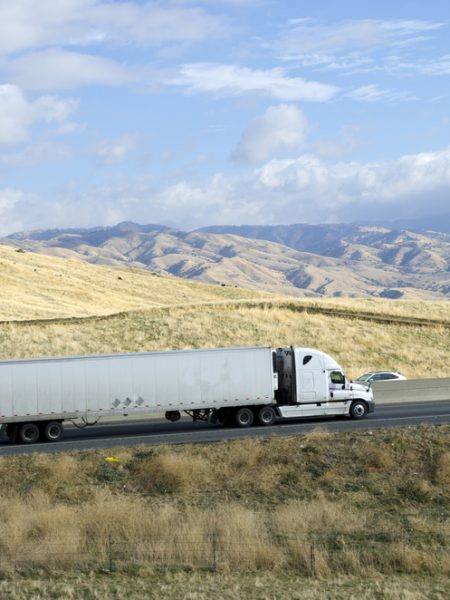

One question we get asked a lot concerns the impact of AirDog on fuel efficiency. The way that AirDog improves the fuel delivery process to the engine, including providing cleaner, air-free fuel, and maintaining optimal pressure to the fuel injectors, is going to result in improved diesel fuel efficiency in a heavy-duty engine. But the question is, how much?
That’s a surprisingly complicated question. We generally can say that operators can expect fuel economy to improve by three-tenths of a mile. However, we have had reports of greater improvements, but there are so many factors that go into fuel economy that we can’t make specific guarantees.
When you use AirDog systems, you should see an improvement in fuel economy. But how much depends on a variety of factors that we will explore below.
When it comes to examining fuel efficiency, there are numerous things to consider, including:
As you can see, there are plenty of variables to consider, and these are only some of them.
It certainly makes sense that AirDog users and potential customers would want to know how much AirDog will improve their fuel efficiency. Unfortunately, the generalized answer we have to give is, “It depends.”
Several major factors should always go into the fuel efficiency equation. These include:
You have likely noticed that different drivers can take significantly different approaches to operating a vehicle. One driver might take a very cautious approach, accelerating slowly and steadily from each stop, never going above the speed limit, and generally taking it as easy as possible on the vehicle.
Another driver might let nothing get in the way of reaching their destination. They might stomp the gas pedal to the floor after each stop, have a rule to travel at least 10 mph above the speed limit (if not more), and demand as much out of the vehicle as possible.
These are examples of extremes, and most drivers fall somewhere in the middle. However, studies have shown that driver behavior can affect fuel economy by as much as 30% at highway speeds and 40% in stop-and-go traffic.
The vehicle and engine type can make a significant difference in fuel economy. There are so many different diesel vehicles out there, even if you only consider heavy-duty trucks. Over a hundred years of diesel trucks have been manufactured. While it’s unlikely someone will be driving a hundred-year-old truck, the point is that many different trucks can use AirDog. And that’s only the trucks. When you add in the engines, you have many potential combinations.
A modern diesel engine is a beautiful, highly efficient machine. Older diesel engines are workhorses, but efficiency was not as much of a concern. The increased fuel efficiency provided by AirDog will vary significantly depending on the engine it is installed on.
If you have operated a heavy truck in different terrains, you know how much variation there can be in fuel consumption. Driving in the Rocky Mountains demands substantially more fuel than cruising along the plains of Kansas.
Hauling conditions affect fuel consumption, too. A truck hauling 80,000 pounds of gravel is going to consume more fuel than one hauling 40,000 pounds of furniture.
The quality of diesel fuel affects fuel economy. A higher quality fuel is going to deliver better fuel economy while a lower quality fuel will not burn as efficiently and will therefore lower fuel economy. Some studies have shown that premium diesel can deliver a five percent increase in fuel economy compared to standard diesel. That kind of difference adds up over time.
AirDog systems were developed to provide superior performance compared to traditional fuel filtration systems found in heavy-duty diesel applications. The improvements offered by AirDog are considerable when taken together, including less wear and tear on fuel injectors, pumps, and emission system components. Improved engine performance and improved fuel efficiency are also benefits of using AirDog.
AirDog improves fuel efficiency by improving engine performance. The double filtration system removes not just particulates, but also water, air, and vapor. That means that the fuel passing from the filters into the fuel injectors is as clean and free of air as possible. Engines run best on perfect fuel, and AirDog delivers fuel that is as close to perfect as possible under real-world conditions.
AirDog also maintains optimal fuel pressure for the injectors. That provides consistency to the engine and better performance overall. Not just less wear and tear, but maximum energy production from the engine for a given unit of fuel. Less wasted, unburned fuel out the tailpipe, more miles traveled per gallon.
The performance of AirDog is something special, but it is only one component of a diesel engine. All of the other factors listed above come into play as well, which makes it important to err on the side of caution when making claims about improved fuel efficiency.
We are proud of our product and passionate about doing right by our customers. That’s why we don’t make wild, exaggerated claims about what our systems can do. When the answers are clear and we can demonstrate them through solid data, we say so. When the answers are less clear and subject to many variables we can’t control, we are more conservative in our claims.
It has been our observation that heavy-duty diesel engines tend to see an improvement of around three-tenths of a mile per gallon when using AirDog systems. The results can vary though depending on the factors mentioned above and other factors.
When you use AirDog, you can expect improvements. The exact measurements, however, will depend on your specific circumstances. It is worth noting that even three-tenths of a mile of improved fuel efficiency adds up over time. You get all the other benefits of using AirDog, including better performance and less wear and tear on your engine components, along with a modest improvement in fuel efficiency.
AirDog should improve the fuel efficiency of your vehicle by around three-tenths of a mile per gallon, although that amount can vary depending on many factors. Some of these factors include how the vehicle is driven, vehicle and engine type, terrain and hauling conditions, and fuel quality.
For more information on AirDog systems and how they can help you get the most out of your diesel, please get in touch.


Heavy-duty diesel fuel systems from AirDog will help increase your mileage and injector life by removing water, vapor and contaminants. Made in the USA since 1990.
PUREFLOW™ TECHNOLOGIES, INC.
5508 Business 50 West
Jefferson City, MO 65109
© 2025. All rights reserved.
Site by Zimmer Communications